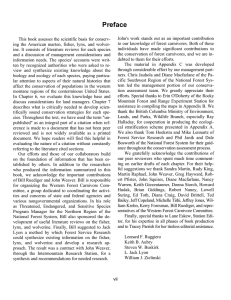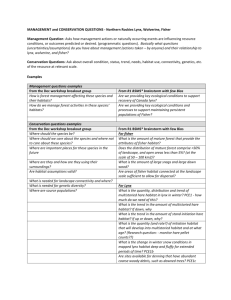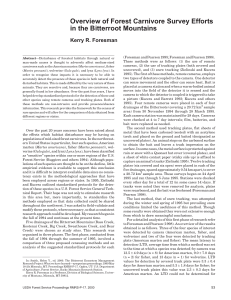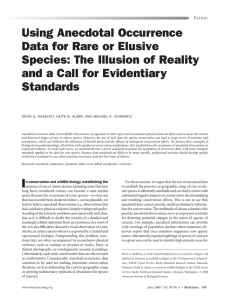Fisher, Lynx, Wolverine Summary of Distribution Information Appendix B
advertisement
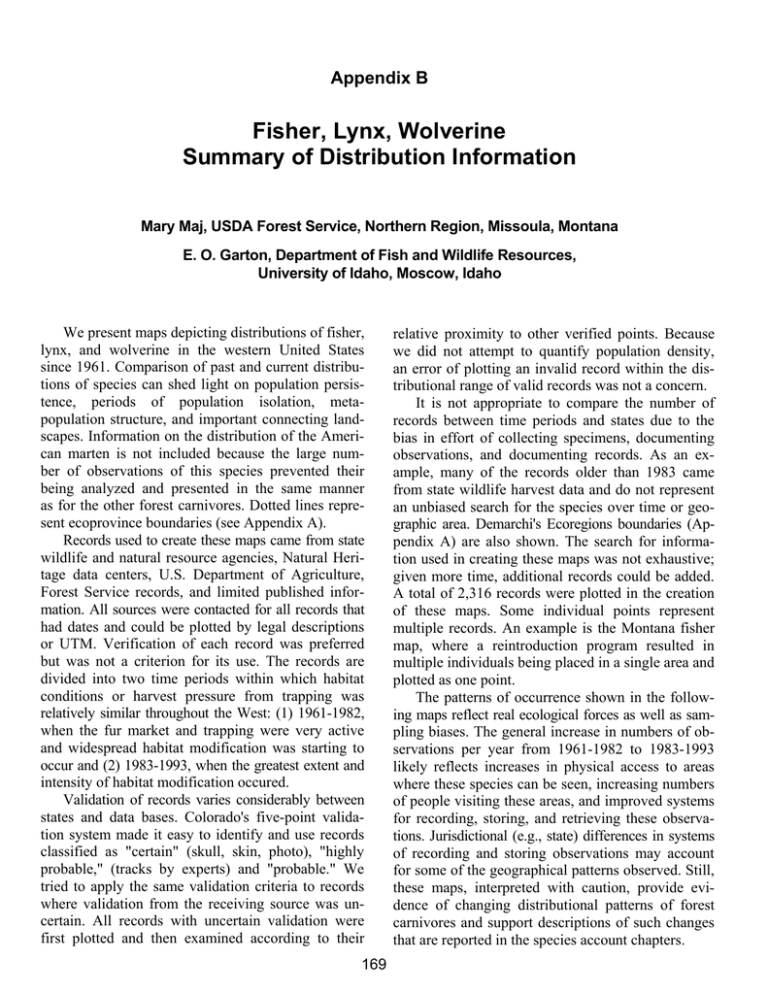
Appendix B Fisher, Lynx, Wolverine Summary of Distribution Information Mary Maj, USDA Forest Service, Northern Region, Missoula, Montana E. O. Garton, Department of Fish and Wildlife Resources, University of Idaho, Moscow, Idaho We present maps depicting distributions of fisher, lynx, and wolverine in the western United States since 1961. Comparison of past and current distributions of species can shed light on population persistence, periods of population isolation, metapopulation structure, and important connecting landscapes. Information on the distribution of the American marten is not included because the large number of observations of this species prevented their being analyzed and presented in the same manner as for the other forest carnivores. Dotted lines represent ecoprovince boundaries (see Appendix A). Records used to create these maps came from state wildlife and natural resource agencies, Natural Heritage data centers, U.S. Department of Agriculture, Forest Service records, and limited published information. All sources were contacted for all records that had dates and could be plotted by legal descriptions or UTM. Verification of each record was preferred but was not a criterion for its use. The records are divided into two time periods within which habitat conditions or harvest pressure from trapping was relatively similar throughout the West: (1) 1961-1982, when the fur market and trapping were very active and widespread habitat modification was starting to occur and (2) 1983-1993, when the greatest extent and intensity of habitat modification occured. Validation of records varies considerably between states and data bases. Colorado's five-point validation system made it easy to identify and use records classified as "certain" (skull, skin, photo), "highly probable," (tracks by experts) and "probable." We tried to apply the same validation criteria to records where validation from the receiving source was uncertain. All records with uncertain validation were first plotted and then examined according to their 169 relative proximity to other verified points. Because we did not attempt to quantify population density, an error of plotting an invalid record within the distributional range of valid records was not a concern. It is not appropriate to compare the number of records between time periods and states due to the bias in effort of collecting specimens, documenting observations, and documenting records. As an example, many of the records older than 1983 came from state wildlife harvest data and do not represent an unbiased search for the species over time or geographic area. Demarchi's Ecoregions boundaries (Appendix A) are also shown. The search for information used in creating these maps was not exhaustive; given more time, additional records could be added. A total of 2,316 records were plotted in the creation of these maps. Some individual points represent multiple records. An example is the Montana fisher map, where a reintroduction program resulted in multiple individuals being placed in a single area and plotted as one point. The patterns of occurrence shown in the following maps reflect real ecological forces as well as sampling biases. The general increase in numbers of observations per year from 1961-1982 to 1983-1993 likely reflects increases in physical access to areas where these species can be seen, increasing numbers of people visiting these areas, and improved systems for recording, storing, and retrieving these observations. Jurisdictional (e.g., state) differences in systems of recording and storing observations may account for some of the geographical patterns observed. Still, these maps, interpreted with caution, provide evidence of changing distributional patterns of forest carnivores and support descriptions of such changes that are reported in the species account chapters. Fisher observations 1961 to 1982. 170 Fisher observations 1983 to 1993. 171 Lynx observations 1961 to 1982. 172 Lynx observations 1983 to 1993. 173 Wolverine observations 1961 to 1982. 174 Wolverine observations 1983 to 1993. 175
